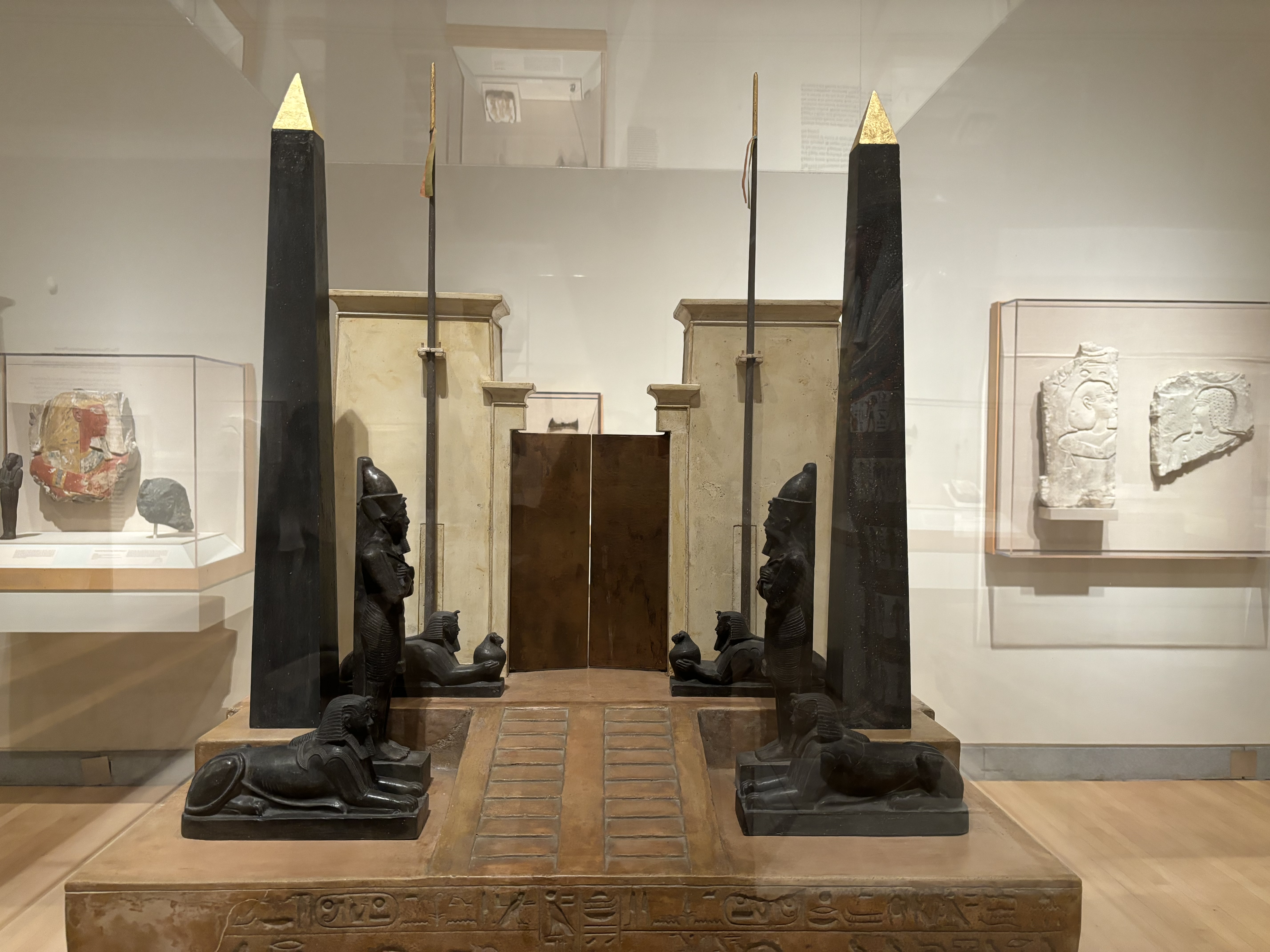1. Two black sphinx facing each other horizontally
2. An uphill walkway to the large gates
3. Two Gods (black) one each side facing each other
4. Two more sphinx behind the aforementioned objects
5. Behind the second set of sphinx is the brown colored tall double crested gates
6. Beige high walls holding the doors with tall flagpoles attacked on either sides.
What do you see going on in this work of art? Is there a story depicted?
It shows the discrepancy between the noble and common men of Egypt. Specifically, the high walls and doors closing off the temple expand on these discrepancies between the two groups of people, even at a place of worship. As you walk around the piece, you can change from the perspective of the noble man to the common man, which is both melancholy and isolating. The story being told is the perspectives of the noble men versus the common men. The hieroglyphics show men holding the offerings to the Gods and in front of the temple that shields the noble men. In a way, this emphasizes the social hierarchy, since the people inside the temple are kings and noblemen who were comparable to the Gods, while the common men are offering their blessings to both the nobility and the Gods.
What different visual elements (ie: line, color, light, proportions, scale, composition, media type etc.) do you notice, and how do they help you make sense of the artwork?
The proportionality of the sphinxes and the statues of the god Osiris helps to symbolize just how important these symbols were to the ancient Egyptians. They were basic elements of the temples, and were meant to convey how essential religion was. By scaling up the statues, every visitor to the temple would first see the large, black statues before entering the temple itself as a reminder of the god’s power and influence over their lives. They help us make sense of the artwork because it emphasizes the concept of deities and the impact they had on Egyptian history overall.
What choices do you think the museum made about the object’s display?
The object was placed with the other reliefs in order to emphasize the importance of Egyptian royalty on Egyptian society; the temples were erected by the pharaoh of Egypt, because it was a responsibility to construct temples for their kingdom. This was very significant, and should have a very large role in the museum therefore they reserved a large space in the gallery along with other pharaoh remains because they’re all connected to a similar part of history. In addition to the large space dedicated for the object, it was reserved to observe not only the front of the object but also the back, in order to provide different perspectives and hierarchy that was prevalent during the Egyptian era.
Group Members
| Name (first and last) | Campus | Seminar 1 Professor |
|---|---|---|
| Angelina Nur | Hunter | Susanna Cole |
| Krishti Banik | Hunter | Justin Beal |
| Faria Miajee | Hunter | Justin Beal |
| Fariha Kha | Hunter | Susanna Cole |
| Debanjoli Chowdhury | Hunter | Kevin Brown |
| Jafnoon Khatun | Hunter | Susanna Cole |


